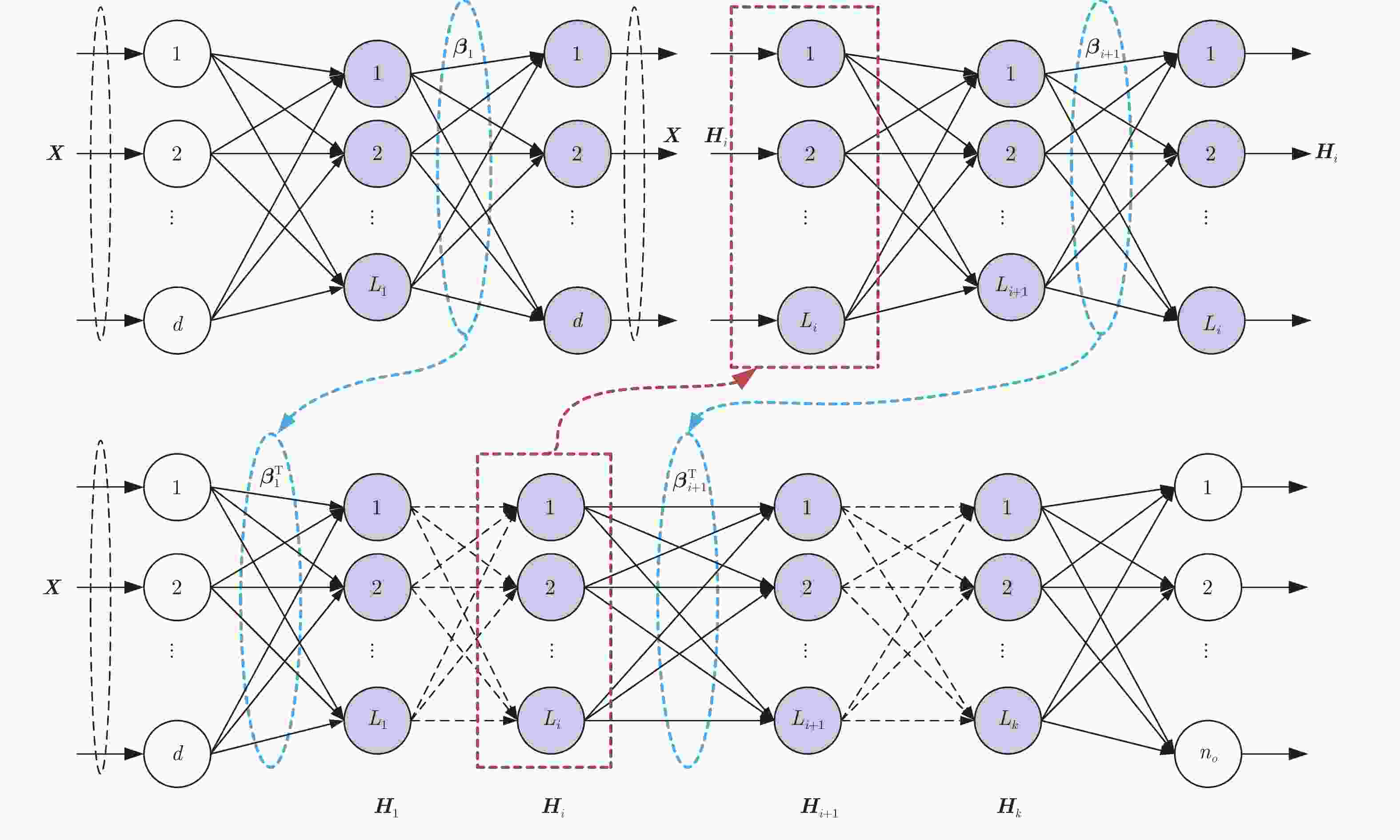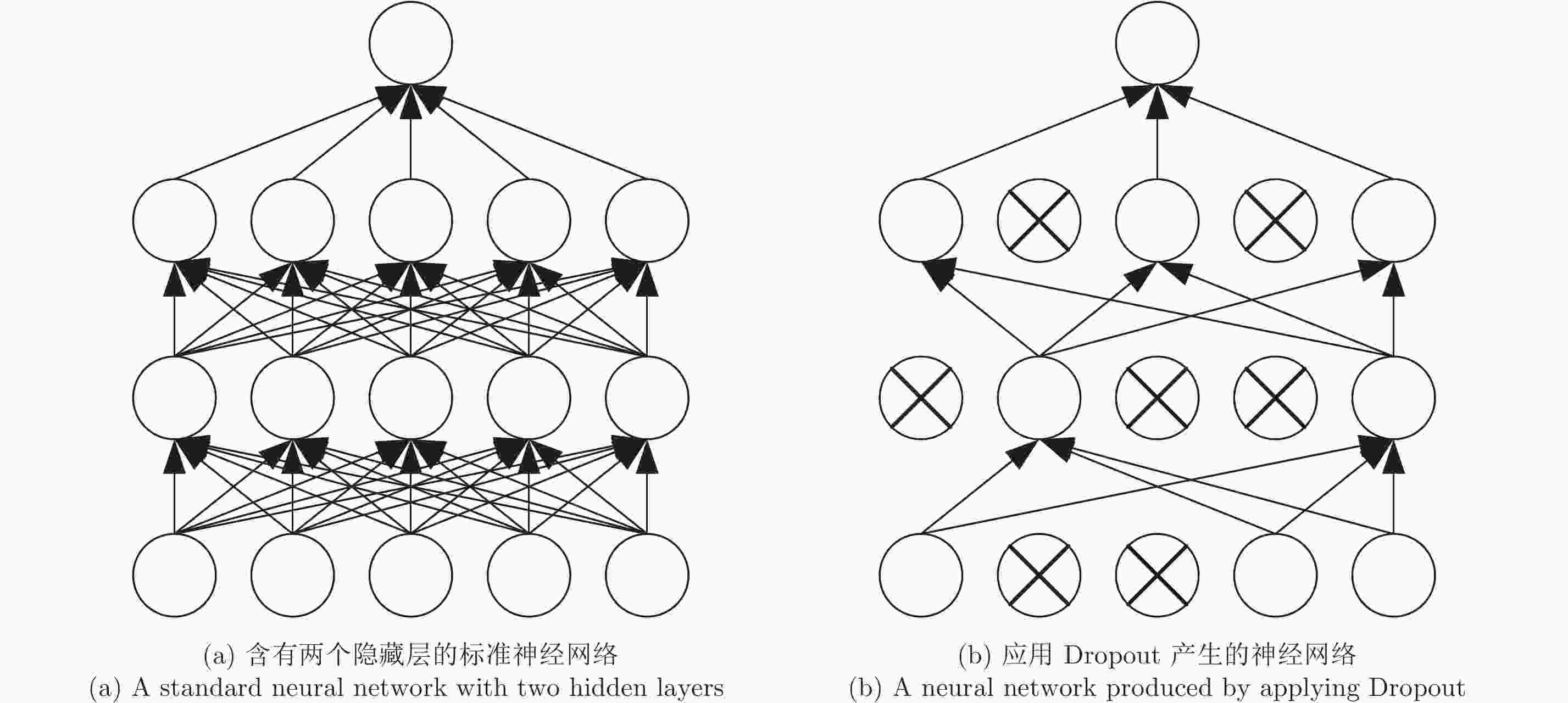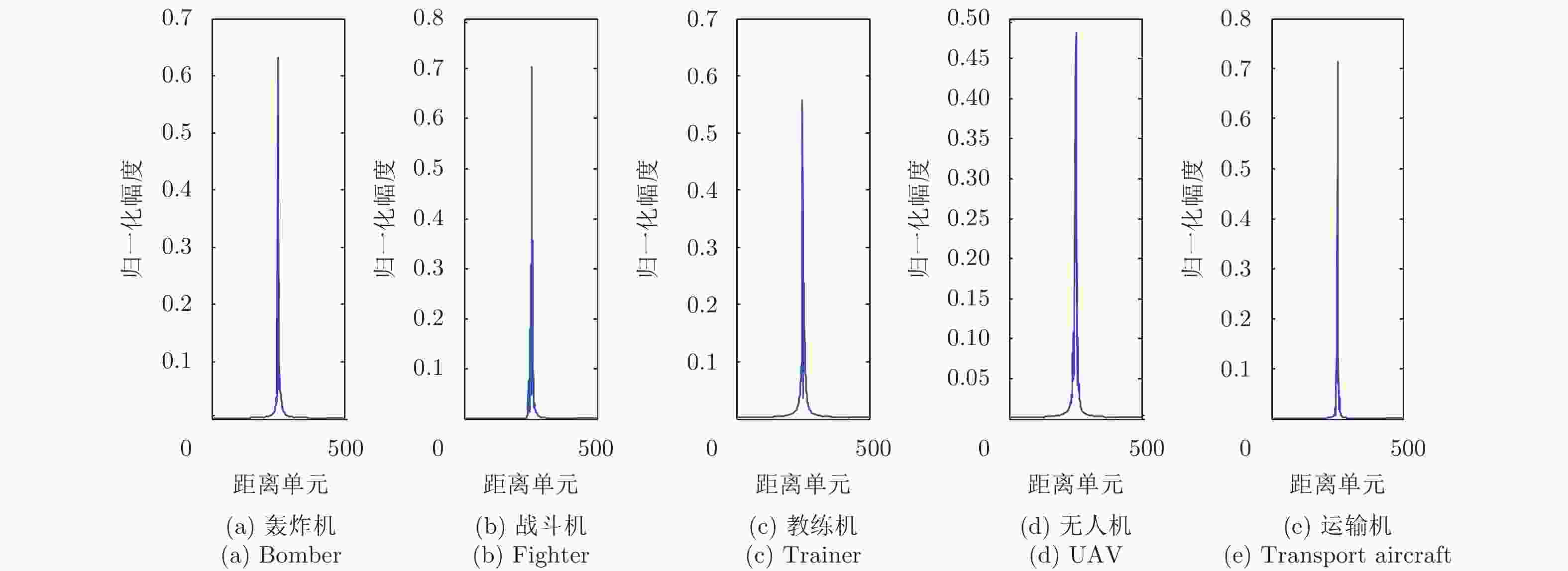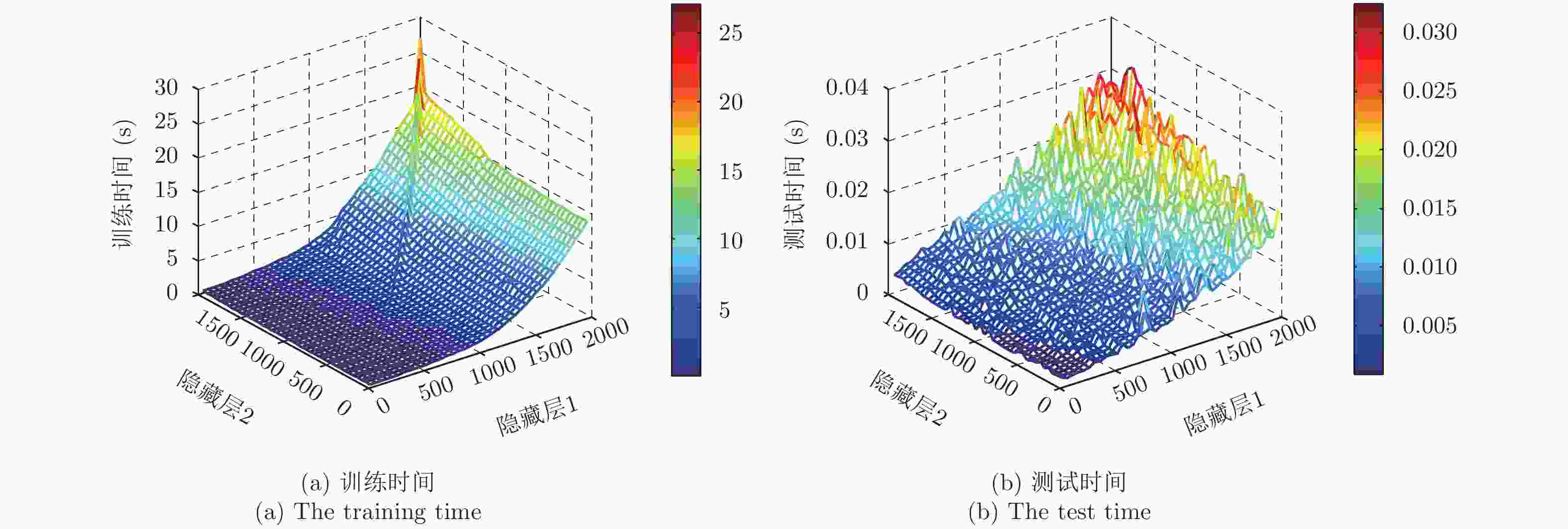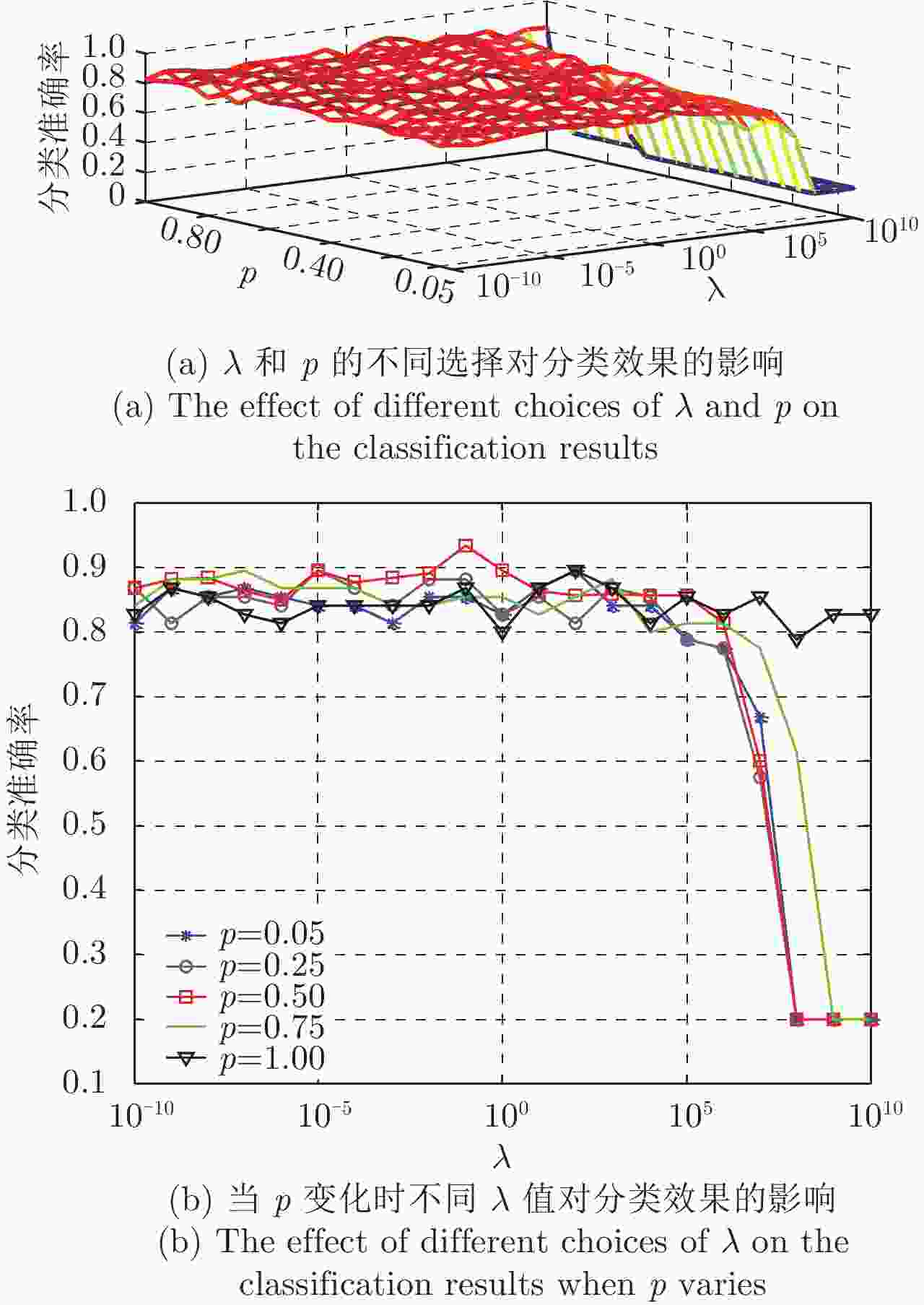A Radar Target Classification Algorithm Based on Dropout Constrained Deep Extreme Learning Machine
-
摘要: 雷达目标分类在军事和民用领域发挥着重要作用。极限学习机(Extreme Learning Machine, ELM)因其学习速度快、泛化能力强而被广泛应用于分类任务中。然而,由于其浅层结构,ELM无法有效地捕获数据深层抽象信息。虽然许多研究者已经提出了深度极限学习机,它可以用于自动学习目标高级特征表示,但是当训练样本有限时,模型容易陷入过拟合。为解决此问题,该文提出一种基于Dropout约束的深度极限学习机雷达目标分类算法,在雷达测量数据上的实验结果表明所提算法在分类准确率上达到93.37%,相较栈式自动编码器算法和传统深度极限学习机算法分别提高了5.25%和8.16%,验证了算法有效性。Abstract: Radar target classification is very important in military and civilian fields. Extreme Learning Machines (ELMs) are widely used in classification because of their fast learning speed and good generalization performance. However, because of their shallow architecture, ELMs may not effectively capture the data high level abstractions. Although many researchers have proposed the Deep Extreme Learning Machine (DELM), which can be used to automatically learn high level feature representations, the model easily falls into overfitting when the training sample is limited. To address this issue, Dropout Constrained Deep Extreme Learning Machine (DCDELM) is proposed in this paper. The experimental results on the measured radar data show that the accuracy of the proposed algorithm can reach 93.37%, which is 5.25% higher than that of the stacked autoencoder algorithm, and 8.16% higher than that of the traditional DELM algorithm.
-
表 1 所提方法和其他算法分类准确率比较
Table 1. Comparison of classification accuracy between the proposed method and other algorithms
方法 分类准确率(%) 训练时间(s) SAE 88.12 7.8746 DELM 85.21 0.4121 所提方法 93.37 0.4205 -
[1] Liu Y X, Zhu D K, Li X, et al. Micromotion characteristic acquisition based on wideband radar phase[J]. IEEE Transactions on Geoscience and Remote Sensing, 2014, 52(6): 3650–3657. DOI: 10.1109/TGRS.2013.2274478 [2] Bigdeli B and Pahlavani P. Quad-polarized synthetic aperture radar and multispectral data classification using classification and regression tree and support vector machine-based data fusion system[J]. Journal of Applied Remote Sensing, 2017, 11(1): 016007. DOI: 10.1117/1.JRS.11.016007 [3] Shi J F, Li L L, Liu F, et al. Unsupervised polarimetric synthetic aperture radar image classification based on sketch map and adaptive Markov random field[J]. Journal of Applied Remote Sensing, 2016, 10(2): 025008. DOI: 10.1117/1.JRS.10.025008 [4] Hinton G E and Salakhutdinov R R. Reducing the dimensionality of data with neural networks[J]. Science, 2006, 313(5786): 504–507. DOI: 10.1126/science.1127647 [5] Lecun Y, Bengio Y, and Hinton G. Deep learning[J]. Nature, 2015, 521(7553): 436–444. DOI: 10.1038/nature14539 [6] Zhao F X, Liu Y X, Huo K, et al. Radar HRRP target recognition based on stacked autoencoder and extreme learning machine[J]. Sensors, 2018, 18(1): 173. DOI: 10.3390/s18010173 [7] Abdel-Hamid O, Mohamed A R, Jiang H, et al. Convolutional neural networks for speech recognition[J]. IEEE/ACM Transactions on Audio,Speech,and Language Processing, 2014, 22(10): 1533–1545. DOI: 10.1109/TASLP.2014.2339736 [8] Ding J, Chen B, Liu H W, et al. Convolutional neural network with data augmentation for SAR target recognition[J]. IEEE Geoscience and Remote Sensing Letters, 2016, 13(3): 364–368. DOI: 10.1109/LGRS.2015.2513754 [9] Wang X L, Guo R, and Kambhamettu C. Deeply-learned feature for age estimation[C]. Proceedings of 2015 IEEE Winter Conference on Applications of Computer Vision (WACV), Waikoloa, HI, USA, 2015: 534–541. DOI: 10.1109/WACV.2015.77. [10] Huang G B, Zhu Q Y, and Siew C K. Extreme learning machine: Theory and applications[J]. Neurocomputing, 2006, 70(1/3): 489–501. DOI: 10.1016/j.neucom.2005.12.126 [11] Huang G, Huang G B, Song S J, et al. Trends in extreme learning machines: A review[J]. Neural Networks, 2015, 61: 32–48. DOI: 10.1016/j.neunet.2014.10.001 [12] Liang N Y, Huang G B, Saratchandran P, et al. A fast and accurate online sequential learning algorithm for feedforward networks[J]. IEEE Transactions on Neural Networks, 2006, 17(6): 1411–1423. DOI: 10.1109/TNN.2006.880583 [13] Zong W W and Huang G B. Face recognition based on extreme learning machine[J]. Neurocomputing, 2011, 74(16): 2541–2551. DOI: 10.1016/j.neucom.2010.12.041 [14] Liu N and Wang H. Evolutionary extreme learning machine and its application to image analysis[J]. Journal of Signal Processing Systems, 2013, 73(1): 73–81. DOI: 10.1007/s11265-013-0730-x [15] Ding S F, Zhang N, Zhang J, et al. Unsupervised extreme learning machine with representational features[J]. International Journal of Machine Learning and Cybernetics, 2017, 8(2): 587–595. DOI: 10.1007/s13042-015-0351-8 [16] Zhao F X, Liu Y X, Huo K, et al. Radar target classification using an evolutionary extreme learning machine based on improved quantum-behaved particle swarm optimization[J]. Mathematical Problems in Engineering, 2017: 7273061. DOI: 10.1155/2017/7273061 [17] Kasun L L C, Zhou H M, Huang G B, et al. Representational learning with ELMs for big data[J]. IEEE Intelligent Systems, 2013, 28(6): 31–34. [18] Yu W C, Zhuang F Z, He Q, et al. Learning deep representations via extreme learning machines[J]. Neurocomputing, 2015, 149: 308–315. DOI: 10.1016/j.neucom.2014.03.077 [19] Zhu W T, Miao J, Qing L Y, et al.. Hierarchical extreme learning machine for unsupervised representation learning[C]. Proceedings of 2015 International Joint Conference on Neural Networks (IJCNN), Killarney, Ireland, 2015: 1–8. DOI: 10.1109/IJCNN.2015.7280669. [20] Tang J X, Deng C W, and Huang G B. Extreme learning machine for multilayer perceptron[J]. IEEE Transactions on Neural Networks and Learning Systems, 2016, 27(4): 809–821. DOI: 10.1109/TNNLS.2015.2424995 [21] Hinton G E, Srivastava N, Krizhevsky A, et al.. Improving neural networks by preventing co-adaptation of feature detectors[OL]. https://arxiv.org/abs/1207.0580.2012.07. [22] Srivastava N, Hinton G, Krizhevsky A, et al. Dropout: A simple way to prevent neural networks from overfitting[J]. The Journal of Machine Learning Research, 2014, 15(1): 1929–1958. [23] Iosifidis A, Tefas A, and Pitas I. DropELM: Fast neural network regularization with dropout and dropconnect[J]. Neurocomputing, 2015, 162: 57–66. DOI: 10.1016/j.neucom.2015.04.006 [24] Baldi P and Sadowski P. The dropout learning algorithm[J]. Artificial Intelligence, 2014, 201: 78–122. [25] Wager S, Wang S D, and Liang P. Dropout training as adaptive regularization[C]. Proceedings of the 26th International Conference on Neural Information Processing Systems (NIPS), Lake Tahoe, Nevada, 2013: 351–359. [26] Yang W X, Jin L W, Tao D C, et al. DropSample: A new training method to enhance deep convolutional neural networks for large-scale unconstrained handwritten Chinese character recognition[J]. Pattern Recognition, 2016, 58: 190–203. DOI: 10.1016/j.patcog.2016.04.007 [27] Baldi P and Sadowski P. Understanding dropout[C]. Proceedings of the 26th International Conference on Neural Information Processing Systems (NIPS), Lake Tahoe, Nevada, 2013: 2814–2822. -



 作者中心
作者中心 专家审稿
专家审稿 责编办公
责编办公 编辑办公
编辑办公

 下载:
下载:
